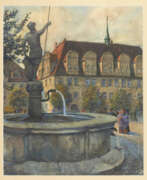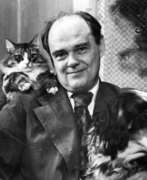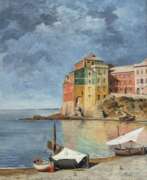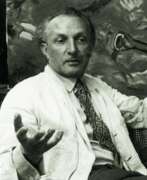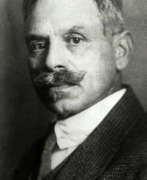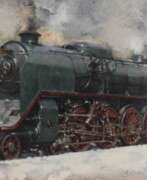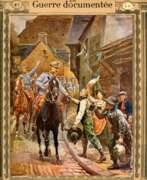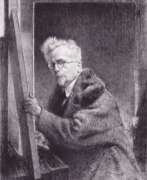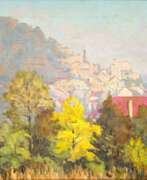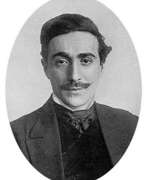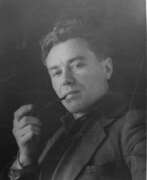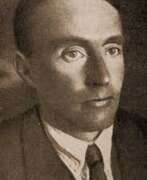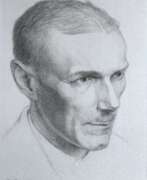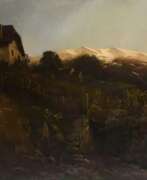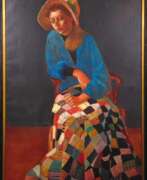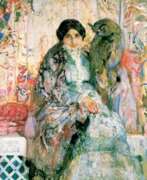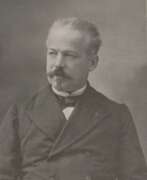Posterists Realism
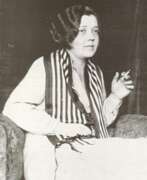

Zinaida Antonovna Astapovich-Bocharova (Russian: Зинаида Антоновна Астапович-Бочарова) was a Russian, Soviet and Belarusian artist of the twentieth century. She is known as a painter, graphic artist and teacher.
Zinaida Astapovich-Bocharova worked in the genres of portrait, landscape, propaganda poster, as well as book illustration - mainly for fairy tale books. She painted in watercolor, oil, pencil, charcoal, gouache, and pastel. Much of her work from the 1930s and 1940s was lost during the evacuation of the artist from besieged Leningrad.


Jacques (Ya'akov) Chapiro was a painter of the School of Paris.
Chapiro's works can be found in museums in the United States (Chicago), Russia (Moscow) and France (Jeu de Paume, Paris). As to his artistic style, it seems that Chapiro was fond of experiments. His many paintings are much different from one another; some are classified as Cubistic in style, some as Impressionist and others as Fauvist. Throughout his artistic career, Chapiro kept sketching in his unique signature, with a light and talented hand. It is in his realistic sketching, which are somewhat casual, that one can be truly impressed by his talent.
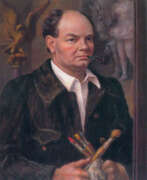

John Steuart Curry was an American artist, celebrated for his role in the Regionalist art movement. Born in Dunavant, Kansas, Curry captured the raw and tumultuous aspects of rural American life through his paintings. His works often depicted dramatic scenes of Kansas, including tornadoes, prairie fires, and other challenging aspects of rural existence, reflecting both his admiration and critique of the land.
Curry's significant contribution to American art is evident in his murals, particularly "Tragic Prelude," housed in the Kansas State Capitol. This mural portrays John Brown amidst the violent conflicts of the Civil War, encapsulating the tensions within American identity and history. Despite its controversy, especially concerning its portrayal of Brown and Kansas, this work remains pivotal in understanding the nation's past.
He studied at prestigious institutions such as the Art Institute of Chicago and later moved between New York, Paris, and Connecticut, contributing to his eclectic style. Curry’s journey as an artist was marked by a transition from commercial illustration to a focus on creating paintings that resonate with everyday Americans, which he believed should be the essence of art.
For those interested in the works and life of John Steuart Curry, including updates on exhibitions and sales of his artwork, you can sign up for our newsletter. This subscription will ensure you are informed about new product sales and auction events specifically related to Curry's works.
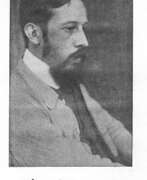

Fritz Helmuth Ehmcke was a German graphical designer, typographer and illustrator. Ehmcke was educated as a lithographer in Berlin during 1893–1897. In 1900, he was a co-founder of Steglitzer Werkstatt. From 1903, he taught at the Kunstgewerbeschule in Düsseldorf, from 1913 to 1938 in Munich, during 1920-1921 also in Zürich. During 1946 to 1948, he was professor at the Academy of Fine Arts, Munich. He designed a number of typesets, notably Ehmcke-Antiqua and Ehmcke-Kursiv in 1909/10 (adopted for English-language typesetting by Stephenson Blake under the name Carlton).


Max Eschle was a German commercial artist. He was a member of the second group of The Six, one of the first artists' groups to market advertising commissions, specifically posters. In 1935 the Deutsche Reichspost issued three stamps designed by Eschle for the Winter Olympics in Garmisch-Partenkirchen and in 1936 another eight stamps for the Summer Olympics in Berlin. In addition to numerous posters for events, there are well-known works by the Sonthofen mountain troops. He also made a number of advertising stamps, which were common and common before the First World War, as well as various oil paintings of mostly Bavarian or Austrian landscapes, some of which were printed as postcards. Eschle was represented in 1943 with the oil painting Peasant Woman at War at the Great German Art Exhibition in Munich. In 1936 he designed the poster for the National Socialist inflammatory propaganda exhibition "Bolshevism", which took place in the Deutsches Museum.
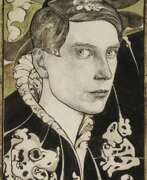

Bernard / Ben Essers was a Dutch painter. His work was part of the painting event in the art competition at the 1936 Summer Olympics. Essers' work was included in the 1939 exhibition and sale Onze Kunst van Heden (Our Art of Today) at the Rijksmuseum in Amsterdam.
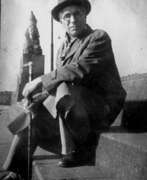

Rudolf Rudolfovich Frentz (Russian: Рудо́льф Рудо́льфович Фре́нц) was a Soviet and Russian painter, watercolorist, graphic artist, and art teacher, known for his contributions to the Leningrad School of Painting. Born on July 23, 1888, in Marienburg, a suburb of Saint Petersburg, he studied at the Imperial Academy of Arts under Vasily Savinsky and Nikolai Samokish. Frentz's early work focused on battle scenes, which became a hallmark of his style.
Frentz's work is celebrated for its dynamic composition and attention to historical detail, particularly in his depictions of military scenes. He was a member of the Leningrad Union of Artists and was deeply involved in the artistic community of Leningrad. His paintings, which often portrayed the heroism and struggles of Soviet soldiers, were exhibited in numerous prestigious shows and galleries throughout his career.
Notable works by Frentz include paintings like "Battle of Borodino" and "Storming of the Winter Palace," which are admired for their dramatic intensity and historical accuracy. His legacy continues to be honored in Russian art history, with his works held in collections such as the State Russian Museum and the Tretyakov Gallery.
Stay updated on new product sales and auction events related to Rudolf Rudolfovich Frentz by signing up for our updates. This subscription will only notify you of relevant sales and events.
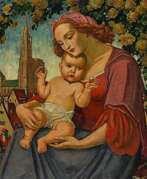

Franz Paul Glass is a German commercial artist, illustrator and type designer. From 1909 to 1910 he lived in Italy. Then he settled in Munich as a freelance artist, graphic artist, advertising designer and interior designer. In 1914, Glass, together with Valentin Zietara, Friedrich Heubner, Karl Moos, Emil Praetorius and Max Schwarzer, founded the group of artists "Six", and was also a member of the second formation of this group, founded in 1924. He was a member of the German Society for Christian Art, the Munich Association of Artists Der Bund, the Munich Cooperative Society of Artists, the Munich Art Association, the Association of German Imperial Artists and the Conference of Christian Art in Munich. In 1922 he was a member of the artists' committee of the German Trade Exhibition in Munich. Glass designed exhibition and advertising posters, including for the association of Munich poster artists "Six", the luxury car company "Dion Monopoly", the German exhibition of the brewery in Munich, etc.
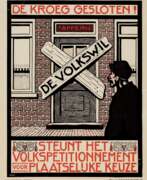

Albert Pieter Hahn was a Dutch political cartoonist, poster artist and book cover designer; well known for his socialist and antimilitaristic viewpoints. Some of his drawings, especially those of the railroad strikes of 1903, have been regularly used in history textbooks. His son-in-law, Albert Hahn jr., was also an artist, so he is sometimes referred to as "Sr.".
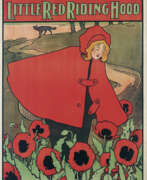

John Hassall was an English illustrator, known for his advertisements and poster designs. In 1895, he began work as an advertising artist for David Allen & Sons, a career which lasted fifty years. Between 1896 and 1899 alone, he produced over 600 theatre poster designs for this firm while, at the same time, providing illustrations to several illustrated newspapers. Making use of flat colours enclosed by thick black lines, his poster style was very suitable for children's books, and he produced many volumes of nursery rhymes and fairy stories, such as Mother Goose’s Nursery Rhymes.


Friedrich Leonhard Heubner was a German commercial artist, painter, draftsman and illustrator. In 1914 he was a founding member of the artist group The Six. In 1916 he was represented in the Ernst Arnold Gallery at the "Second Exhibition of Dresden Artists Who Are in Army Service". From 1920 he was a member of the Munich Secession and regularly exhibited there. Heubner quickly freed himself from Munich Art Nouveau and developed his own sweeping style of drawing. There were caricatures for the youth, the gazebo and the Simplicissimus. Heubner first appeared as a poster designer. In the 1920s he turned more to book illustration and created etchings and lithographs. In his paintings of the 1920s, which he created primarily while traveling, he came to an expressive view of the landscape. His drawings, which show the destroyed Munich and its reconstruction from 1945 onwards, are of cultural-historical importance, many of which are now in the collection of the Munich City Museum.




Serge Ivanoff was a French portrait painter of Russian origin. He created book illustrations, posters and advertisements.
Serge Ivanoff executed portraits of many famous personalities, including Pope Pius XI, Serge Lifar, Yvette Chauvire, Arthur Honegger, Edwige Feuer, Grand Duke Vladimir Kirillovich Romanov, Alexandre Benois, Olga Boznanskaya, Zinaida Serebryakova, Vyacheslav Ivanov, Paul Valéry, Jacques Fath, Eleanor Roosevelt, and Jefferson Caffrey.
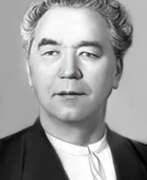

Vasyl Illich Kasiyan (Russian: Василий Ильич Касиян) Vasyl Illich Kasiyan was a Ukrainian artist and graphic designer, celebrated for his contributions to Soviet and Ukrainian visual arts. Born on January 1, 1896, in Mykulyntsi, then part of Austria-Hungary, and passing on June 26, 1976, in Kyiv, Ukrainian SSR, Kasiyan's journey through art was marked by his distinct influence on Soviet-era visual narratives. A World War I veteran, he further honed his artistic skills at the Academy of Fine Arts in Prague in the 1920s under the mentorship of Czech painter Max Švabinský.
Kasiyan's body of work spans various mediums, reflecting the ethos of his times with a deep focus on people, their struggles, and the landscapes they inhabit. Notably, his artworks such as "Portrait of a Young Woman" (1950), "Taras Shevchenko" (1945), and "My Mother" (1940) underscore his mastery in capturing the essence of his subjects, rendering them with an emotional depth that speaks volumes about his connection to the cultural and political landscape of the Soviet Union.
His contributions were widely recognized, earning him titles like the People's Artist of the Soviet Union and the Shevchenko National Prize in 1964, affirming his status as a pivotal figure in Soviet and Ukrainian art. Kasiyan's legacy is not just in the beauty of his works but also in his role as an educator and influencer in the art community, contributing significantly to the National Academy of Visual Arts and Architecture and the Kharkiv Institute of Arts.
For collectors and experts in art and antiques, Vasyl Illich Kasiyan's works represent not only aesthetic beauty but also a historical narrative of the Soviet and Ukrainian people's resilience and spirit. His pieces, found in museums and galleries worldwide, continue to inspire and provoke thought, offering a window into the artist's profound connection with his heritage.
To stay updated on exhibitions and sales featuring Vasyl Illich Kasiyan's art, sign up for our newsletter. This subscription ensures you're the first to know about new discoveries, auction events, and exclusive sales related to this esteemed artist's works.
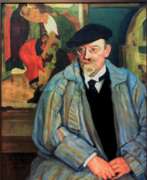

Ivan Semyonovich Kazakov (Russian: Иван Семёнович Казаков) was a Russian painter and graphic artist, known for his contributions to Orientalist art. Born on February 1, 1873, in Kasilova, Oryol Governorate, Kazakov studied at the Moscow School of Painting, Sculpture, and Architecture, and later at the Imperial Academy of Arts under the mentorship of Vladimir Makovsky.
Kazakov's work is notable for its vibrant depictions of Central Asian architecture and landscapes, particularly those of Samarkand, Bukhara, and Tashkent. His paintings often feature detailed portrayals of domes, minarets, and intricate patterns, capturing the essence of these historic cities. This unique focus on Orientalist themes distinguished him from his contemporaries and earned him a prominent place in Russian art history.
Throughout his career, Kazakov exhibited his works in significant venues in Saint Petersburg and Moscow. He also played a crucial role in the art community of Tashkent, where he taught and established his own studio. Several of his works are preserved in museums, including the State Russian Museum and regional art collections, which continue to attract art enthusiasts and collectors.
For updates on new works and auction events related to Ivan Semyonovich Kazakov, sign up for our exclusive alerts. Stay informed about the latest opportunities to acquire pieces by this remarkable artist.
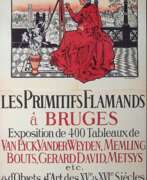

Amédée Ernest Lynen, who often signed his works Am. Lynen, was a Belgian painter, illustrator and writer. In 1880, he was one of the founders of the artistic group L'Essor after it had separated from the academy, and he co-founded its successor Pour l'Art in 1892. In 1895, he founded the "Compagnie du Diable-au-corps", an artistic association which organised evenings with theatre and poetry, and which existed at least until 1899. It also published a satirical newspaper, Le Diable au Corps. In 1903, two works on paper were bought by the Royal Museums of Fine Arts of Belgium. In 1930, a retrospective of his works was organised by the Cercle Artistique et Littéraire in the Vauxhall, Brussels.
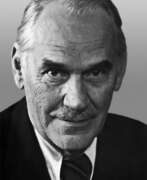

Alexander Mikhailovich Lyubimov (Russian: Алекса́ндр Миха́йлович Люби́мов) was a prominent Russian realist painter, illustrator, graphic artist, and art educator, celebrated for his significant contributions to Russian art, especially during the Soviet era. Born on February 25, 1879, in Paltsevo, Kursk Province of the Russian Empire, Lyubimov is renowned for his mastery in painting and graphics, which often depicted the societal and political landscapes of his time.
Throughout his career, Lyubimov was deeply involved in art education, teaching at prestigious institutions such as the Leningrad Institute of Painting, Sculpture and Architecture, and the Higher School of Art and Industry named after Vera Mukhina from 1934 to 1955. His pedagogical work influenced a generation of Russian artists, including notable figures like Alexander Laktionov and Yuri Neprintsev.
Lyubimov's works are housed in esteemed collections worldwide, including the State Russian Museum and the State Tretyakov Gallery, underscoring his status in the art world. His artworks, characterized by their vivid realism and complex interplay of light and shadow, continue to attract the admiration of collectors and art enthusiasts globally.
For those interested in exploring the works and legacy of Alexander Mikhailovich Lyubimov, subscribing to updates on exhibitions and sales related to his art could provide valuable insights and opportunities to acquire pieces from this influential artist. This subscription service focuses solely on new product sales and auction events related to Lyubimov, ensuring that enthusiasts and collectors are well-informed of the latest offerings.
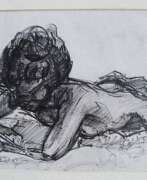

Johann Baptist Maier was a German commercial artist and painter. In 1905 he was a prize winner in a competition for advertising designs for joint advertising by the entrepreneurs Ludwig Stollwerck and Otto Henkell. Maier designed a number of covers for the magazine Die Dame and the 1922 book calendar. Maier worked in Munich from 1909 to 1942. He was a member of the second group The Six and the New Association of Munich Poster Artists. Johann Baptist Maier designed posters for the Marco Polo Tee, for the Kieler Herbstwoche, for the Fliege Blatter, Sporthaus Schuster Munich, among others. Between 1906 and 1925 he supplied almost 700 drawings for the Meggendorfer-Blätter.
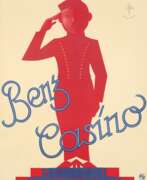

Otto Ottler was a German commercial artist and painter. He studied at the Munich School of Applied Arts and the Munich Academy of Fine Arts. He was a member of the 2nd group "The Six (Artist Group)", which formed in 1924. Ottler later joined the New Association of Munich Poster Artists. On behalf of the Cologne chocolate producer Ludwig Stollwerck, he designed collecting pictures for Stollwerck collecting albums, e.g. the series "Mythical Creatures" for the Stollwerck album no. 12 of 1911.
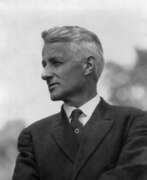

Maxfield Parrish was an American painter and illustrator active in the first half of the 20th century. He is known for his distinctive saturated hues and idealized neo-classical imagery. His career spanned fifty years and was wildly successful: the National Museum of American Illustration deemed his painting Daybreak (1922) to be the most successful art print of the 20th century.
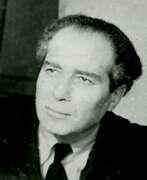

Joseph Alexandrovich Serebriany (Russian: Иосиф Александрович Серебряный) was a prominent figure in the Soviet art scene, known for his deep involvement in various artistic endeavors. Born in Horodnia, Chernigiv Province, in the Russian Empire in 1907, Serebriany showcased his talent and dedication to art from a young age. He pursued his education at several prestigious institutions, including the Poltava Studio of Art, the Leningrad College of Art and Industry, and VKhUTEIN / Institute of Proletarian Fine Arts, where he specialized in theatrical design.
Serebriany's contributions to art were vast and varied. During the challenging times of the Siege of Leningrad from 1941 to 1945, he worked as a poster designer, using his skills to bolster the spirits of those enduring the hardships of war. His commitment to education was equally noteworthy; he taught at the Ilya Repin Institute of Painting, Sculpture and Architecture for over three decades, shaping the minds of future artists. His works, characterized by realism and a focus on Soviet themes, earned him recognition as a People's Artist of the USSR in 1965, a testament to his significant impact on Soviet art.
Serebriany was also an active participant in the Leningrad Union of Artists, serving as its chairman during two periods, which highlights his leadership and influence within the artistic community. His artworks, which include a diverse range of paintings from portraits of Soviet heroes to scenes of significant historical events, are held in high esteem and form part of Russia's national art collection.
For art collectors and experts, Joseph Alexandrovich Serebriany's legacy is a fascinating exploration of Soviet-era artistry, reflecting the social and political atmosphere of his time. His contributions to art education and the portrayal of Soviet themes in his work offer rich insights into the era's artistic movements.
To stay updated on exhibitions and auctions featuring Joseph Alexandrovich Serebriany's work, signing up for updates is highly recommended. This subscription will ensure you are informed about new sales and events related to this influential artist, providing unique opportunities to engage with his impactful legacy.
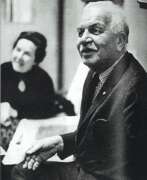

Benjamin Shahn, also known as Ben (Ben / Benjamin Shahn) — Lithuanian-born American artist and photographer. He combined a decorative style of imagery with poignant social themes in his works and is considered one of the most prominent critical artists in the United States. His photographs made him famous as a chronicler of life in New York's working-class and black Southern American communities, as well as the slums of big cities. Many of his street photographs were later used in his paintings and wall panels. He also used newspaper photographs in his work.
Shan's work can be found in many US museums, including the Wichita Museum of Art.


Ivan Nikolayevich Shulga (Russian: Иван Николаевич Шульга) was a Ukrainian Russian and Soviet artist of the first half of the twentieth century. He is known as a master of painting and drawing and a teacher. His name is included in the "Unified Art Rating of the world's 10,000 best artists" and in the list of the 100 most outstanding artists of Ukraine.
Ivan Shulga worked in different genres: he painted portraits, genre paintings, landscapes (marine, landscape, architectural, industrial), created still life paintings, panels, drawings for art postcards, political posters. His artistic legacy also includes pictures in the genre of nude and historical genre. The artist also illustrated magazines and books, designed theatrical sets.
Shulga worked in watercolor, pencil drawing, gouache, ink and sanguine, pastel, oil and tempera painting.
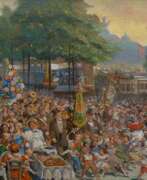

Médard Tytgat was a Belgian painter, lithographer, book illustrator and poster artist known for portraits, nudes, and landscapes. From 1890 to 1894, he studied at the Académie Royale des Beaux-Arts of Brussels with Jean-François Portaels. He took part in the art competitions at the 1924 Summer Olympics. Tytgat was considered a mediocre painter, but was more highly regarded as an illustrator.
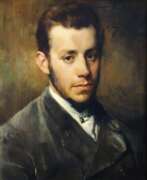

Émile van Doren, birth name Nicolas Émile van Doren, was a Belgian landscape painter. In 1892 he received the Donne Prize, which since 1888 has been awarded by the Brussels Academy for landscape painting. The landscapes in and around Genk, with their vast heathlands, ponds and undulating sand dunes, became the almost exclusive subject of his paintings.
Emile Van Doren's success as a landscape painter was considerable. Early in his career, the royal court bought some of his works.
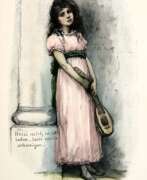

Anna von Wahl (Russian: Анна Эдуардовна фон Валь) was a Baltic-German painter and illustrator, born in 1861 in Saint Petersburg and active until her death in 1938. Known for her delicate and evocative works, von Wahl studied at the Imperial Academy of Arts, where she honed her skills in graphic art and illustration.
Von Wahl's artistic career spanned six decades, during which she created numerous illustrations and paintings that reflected the socio-cultural dynamics of her time. Her work often depicted family and children's scenes, infused with a gentle, sentimental quality. One of her notable works, "Stimmungsbilder" (Mood Pictures), is a collection of illustrations known for its tender portrayal of everyday life.
In addition to her illustrative works, von Wahl's paintings were also well-regarded. Her art was exhibited in several galleries, and she was a member of various artistic associations. Although not as widely recognized today, her contributions to the art world during her lifetime were significant, reflecting the aesthetics and sensibilities of late 19th and early 20th-century Baltic-German culture.
For those interested in exploring more about Anna von Wahl and her works, consider signing up for updates on auction events and new product sales related to her art. This will ensure you stay informed about opportunities to view and acquire her unique pieces.
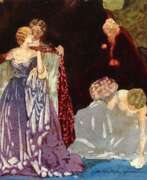

William Blamire Young, commonly known as Blamire Young, was an English/Australian artist who painted primarily in watercolour. In 1911 he held an exhibition at Melbourne of small pictures, some of which had similar qualities to the Japanese coloured wood-cuts of the eighteenth century. He was commissioned by the Postmaster-General of Australia, Charles Edward Frazer, to produce new designs for the first Commonwealth of Australia stamps. This design was first issued on 2 January 1913 and continued to be in use till 1935 concurrently with other stamps. In 1976 he was honoured on a postage stamp issued by Australia Post for his work as designer of the first Australian postage stamp.
